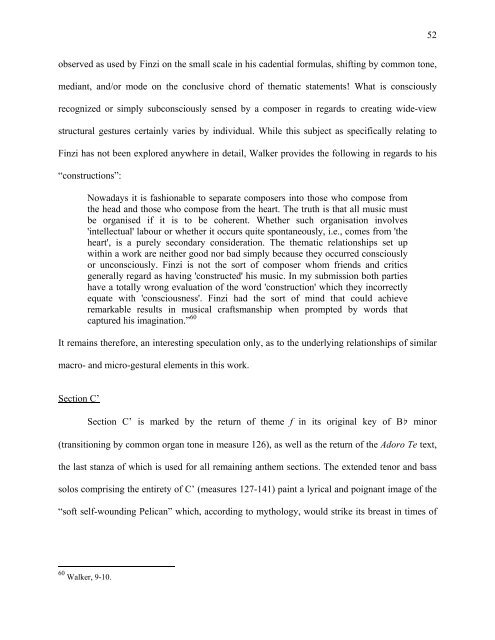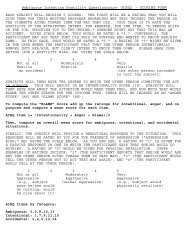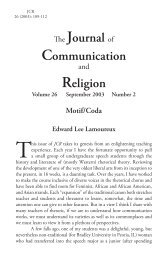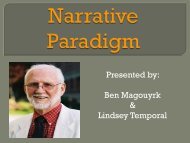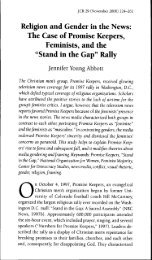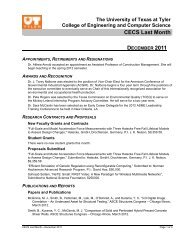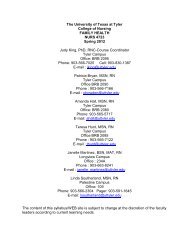"History, Analysis and Performance Considerations of Gerald Finzi's ...
"History, Analysis and Performance Considerations of Gerald Finzi's ...
"History, Analysis and Performance Considerations of Gerald Finzi's ...
You also want an ePaper? Increase the reach of your titles
YUMPU automatically turns print PDFs into web optimized ePapers that Google loves.
52observed as used by Finzi on the small scale in his cadential formulas, shifting by common tone,mediant, <strong>and</strong>/or mode on the conclusive chord <strong>of</strong> thematic statements! What is consciouslyrecognized or simply subconsciously sensed by a composer in regards to creating wide-viewstructural gestures certainly varies by individual. While this subject as specifically relating toFinzi has not been explored anywhere in detail, Walker provides the following in regards to his“constructions”:Nowadays it is fashionable to separate composers into those who compose fromthe head <strong>and</strong> those who compose from the heart. The truth is that all music mustbe organised if it is to be coherent. Whether such organisation involves'intellectual' labour or whether it occurs quite spontaneously, i.e., comes from 'theheart', is a purely secondary consideration. The thematic relationships set upwithin a work are neither good nor bad simply because they occurred consciouslyor unconsciously. Finzi is not the sort <strong>of</strong> composer whom friends <strong>and</strong> criticsgenerally regard as having 'constructed' his music. In my submission both partieshave a totally wrong evaluation <strong>of</strong> the word 'construction' which they incorrectlyequate with 'consciousness'. Finzi had the sort <strong>of</strong> mind that could achieveremarkable results in musical craftsmanship when prompted by words thatcaptured his imagination.” 60It remains therefore, an interesting speculation only, as to the underlying relationships <strong>of</strong> similarmacro- <strong>and</strong> micro-gestural elements in this work.Section C’Section C’ is marked by the return <strong>of</strong> theme f in its original key <strong>of</strong> B♭ minor(transitioning by common organ tone in measure 126), as well as the return <strong>of</strong> the Adoro Te text,the last stanza <strong>of</strong> which is used for all remaining anthem sections. The extended tenor <strong>and</strong> basssolos comprising the entirety <strong>of</strong> C’ (measures 127-141) paint a lyrical <strong>and</strong> poignant image <strong>of</strong> the“s<strong>of</strong>t self-wounding Pelican” which, according to mythology, would strike its breast in times <strong>of</strong>60 Walker, 9-10.


